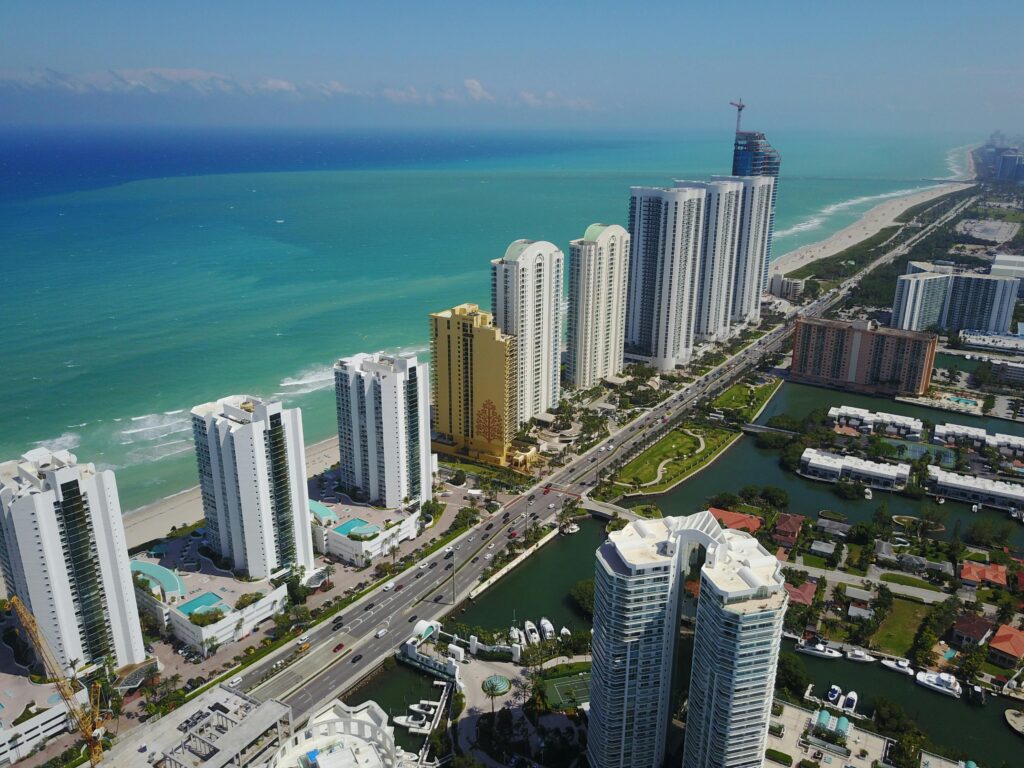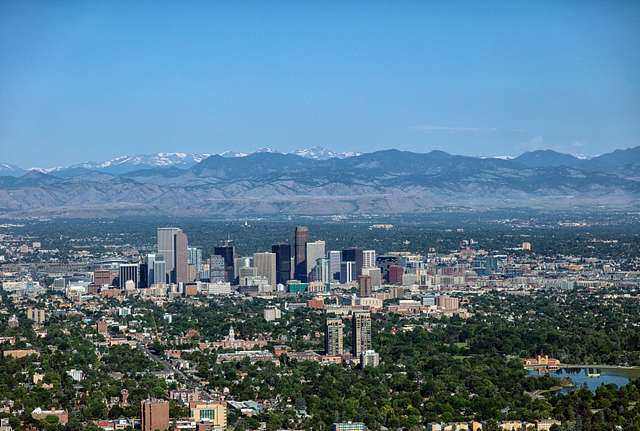Hey friends, gather ’round—your weekly grocery haul is about to get a serious glow-up (and not in a good way). If you thought avocados were already living their best life at $3 apiece, buckle up: prices are gearing up for a wild ride over the next half-decade. From coast to coast, 14 states are primed for sticker shock at the checkout, thanks to everything from climate chaos to labor laws to shipping snags. Let’s break down where your dollars will stretch the least—and why your foodie heart might start sobbing into your reusable tote.
1. California

Even Golden State dreamers won’t escape this one—food prices here are forecast to march upward by roughly 2.6 percent annually through 2030, with fresh produce taking the lead, according to the USDA’s Economic Research Service projections. Snowpack shortages in the Sierra Nevada are slashing irrigation supplies, sending farmers on a water-rationing scramble that adds to your salad’s price tag, just as the California State Water Resources Control Board warns of tighter water allocations. Meanwhile, megafires are nibbling away at arable land each summer, and harvest crews have never been harder to find—labor costs are surging as wages creep higher in an already expensive market.
That “California dreamin’” sandwich at your local deli is about to cost you. Grocery chains are tacking on extra dollars to cover both wildfire insurance premiums and increased freight rates tied to longer, detoured routes. Even big-box bargains won’t be immune: as corn and melon yields dip, bulk-purchase staples will see their per-unit prices climb. Pro tip: snag and freeze seasonal berries now, because come July, your smoothie game will need some serious budget morale.
2. Florida

Sunshine State? More like “surge” State—NOAA’s latest climate-risk report warns that stronger hurricane seasons will jack regional grocery prices by up to 4 percent per year as storm damage forces emergency restocks. Remember when Miami flooded in 2023 and iceberg lettuce spiked 15 percent practically overnight? The Florida Department of Agriculture confirmed saltwater infiltration ruined whole coastal fields. Add in snarled port congestion at Jacksonville and Miami—where incoming containers sit an average five days before unloading—and you’ve got freight surcharges trickling onto your receipt.
By 2030, that afternoon peach snack could cost you nearly a quarter more than today, per those same climate models. Ranchers are shifting cattle inland to escape flood-prone pastures, hiking transport fees that end up baked into your BBQ patties. Imported pantry basics like olive oil and rice spend extra time—and money—waiting offshore. Insider hack: when storms are calm, stock up on dry goods during offseason sales to soften that surge.
3. Texas

Y’all thought Texas only had big hats and barbecue? Think bigger grocery bills. State demographers at the Texas Demographic Center project another 10 percent population boom by 2030—farms around Austin and Houston can’t keep pace, so more food gets trucked in from the Midwest, racking up fuel and driver-wage fees with every mile. Intense summer heat is roasting corn and melon yields, forcing grocers to source from farther-flung fields at premium prices, warns Texas A&M’s agricultural extension.
Then there’s the international angle: reciprocal tariffs on South American soybeans have bumped bean-oil costs in Dallas markets by 12 percent over the past year. That seeps into everything from packaged snacks to pet food. Beef brisket lovers, brace yourselves: transport-and-tariff fees could push your favorite cut up another 5 percent annually. Budget tip: embrace home-canning and look for farmers’ markets in offseason—sometimes direct-from-producer deals undercut the chain stores.
4. New York

If you’ve been lamenting $4 bagels, you’re in for more grief. New York City’s living-wage ordinance has supermarket labor costs soaring, and that extra dime here and quarter there adds up fast on each loaf and liter of milk, as the New York State Department of Labor recently reported. Restaurants and grocery chains battle for the same delivery slots—when you see a produce truck idling, that’s dollars evaporating into idling-time fees, notes Port Authority of New York & New Jersey data.
Local dairy artisans are feeling the pinch, too: yogurt from Hudson Valley farms is projected to jump 8 percent by 2028 as transit costs spike past congested bridges and tunnels, per the New York State Department of Agriculture & Markets. Small grocers are squeezing margins so tight they’re folding, leaving fewer competitors and higher prices at the big players. My hot take: become besties with borough farmers’ markets—just double-check their payment options first.
5. Hawaii

Living in paradise costs—even pineapples are freighted in. The Pacific Ferry Authority reports that nearly 90 percent of Hawaii’s groceries arrive by sea, tacking on an average 15 percent import fee versus mainland rates. When Shanghai port congestion snarled shipments last fall, local rice prices doubled in under two weeks—so confirms the USDA. Every container delay adds demurrage fees that merchants pass right along.
By 2030, grocery inflation here is forecast to outpace the mainland by 4 percent annually, meaning that $12 poke bowl could easily top $15 in the not-so-distant future. Sushi rice, soy sauce, even your favorite Spam variety fees spike when any Pacific chokepoint hiccups. Insider hack: learn to spot local farmers’ market pop-ups—tropical fruits straight from growers often dodge the bulk-shipping markup.
6. Alaska

When your lettuce travels 3,000 miles, it shouldn’t surprise you that salads feel like a luxury tax. Limited summer shipping windows and ice-clogged lanes force hourly freight surcharges that dwarf mainland rates. Cold-chain logistics can’t handle delays: a single storm in the Bering Sea can spoil entire produce freighters.
Local dairy is a unicorn—most milk, cheese, and butter fly in by airfreight, earning Alaska the highest per-gallon milk prices in the nation. Vegetarians, meet reindeer jerky: your new go-to protein. Food-security experts warn this gap will widen without new deep-water ports or subsidized routes.
And let’s not forget the cost of cooking gas and propane, which can double in price when supply ships sit offshore. Hot sauce and salsa lovers will see their favorite condiments spike as small shipments become pricier. Even snack foods like chips end up costing two or three times more than in the Lower 48. Local co-ops suggest community bulk-buy programs just to keep prices from spiraling further. We’re all about sharing the haul—because in Alaska, there’s strength (and savings) in numbers.
7. Washington

Rainy days might never dampen your spirit, but they’ll drown your potato and onion yields in the Yakima Valley. Excess moisture breeds mold, cutting harvests by up to 20 percent in wet seasons. This state’s produce hub hiccups send ripples through grocery aisles nationwide.
At the same time, Seattle’s recent minimum-wage uptick means baristas and cashiers drag prices upward—ever notice that latte foam seems pricier? Grocers are tacking on surcharges to stay afloat. Regional food hubs recommend buying frozen root veg in bulk during drier years.
Beyond the fields, freight through the Port of Seattle faces seasonal congestion that can add extra days to delivery timelines. Every extra day in transit hikes storage fees, and those fees land on your receipt. Specialty imports like exotic fruits see the steepest surcharges—think double the usual markup. Even sunscreen and summer staples become “spring break splurges.” Might be time to master your own backyard micro-greens garden.
8. Massachusetts

Boston’s snowmageddon events have become annual thank-you cards from Mother Nature—digging out cranberry bogs delays harvests, and suddenly cranberry sauce is a luxury. Late-season Nor’easters are already pushing local cranberry prices up 8 percent per winter.
Cambridge’s sky-high commercial rents squeeze out small grocers, who then hike their artisan-cheese wedges to survive. That fancy Manchego you adore? Expect another $2–$3 markup by 2030. Budget tip: scout wholesale markets in Worcester for deals on in-state dairy.
To make matters sweeter—or more expensive—maple syrup production also stutters with warmer winters, so that breakfast staple is trending pricier. Local bakeries are passing those costs into your cinnamon-roll habit. Seasonal honey from Cape Cod beekeepers is following suit, and boutique jams aren’t far behind. Even lobster rolls get a premium when fuel surcharges spike in the Gulf of Maine fisheries. It’s a New England delicacy dilemma!
9. Colorado

Mile-high altitude tastes great, but grocery prices even more so—South Platte basin droughts have trimmed bean and lettuce yields, creating a 7 percent bump in salad fixings at Denver markets. Local farms can’t keep pace with Denver’s booming population, so much of your produce arrives from California or Mexico.
Imported goods already carry fuel surcharges, but drought-driven scarcity adds premium pricing. State ag-economists predict produce imports to climb 15 percent year over year. Grow your own herbs on that balcony if you can.
Plus, ski-season haul costs add to every canned good when road crews battle winter ice. Bulk dry-bean shipments get delayed, nudging up their per-pound price. Trend-loving shoppers paying for those avocado-lavender toast kits might cringe at the forecast. Even Colorado-grown peaches, normally a summer treat, see a modest tag hike as orchards pivot to drought-resistant varieties. Time to embrace the art of canning your own peach jam.
10. Arizona

Phoenix might cook you in the summer, but those furnace-like temps also inflate water costs—Salt River Valley farmers now face double the irrigation fees of a decade ago, and tomatoes are riding that wave straight to $5 each. Dry-season freight from California and Mexico piles on fuel surcharges, too.
That 20-pound sack of rice you buy in bulk? Quality-controlled imports now cost 30 percent more when cross-border delays hit at Nogales.
Local markets are rolling out dynamic pricing apps that nudge shoppers to buy early or late in the week to dodge peak-fee periods. That’s great for deal-hunters who plan ahead—but a headache if you’re a last-minute meal planner. Specialty peppers and heirloom squash also aren’t spared; they’re fetching small fortunes at roadside stands. Even artisan tortillas see a slight uptick as small-batch mills pass on energy costs. Might be time to perfect your own salsa recipe.
11. Georgia

Peach State indeed, but peaches are playing hard to get—Port of Savannah bottlenecks forced many shipments northward last fall, adding hundreds of miles (and dollars) to each crate. Those sweet Georgia peaches you crave will fetch a 10 percent premium when they finally land.
Summer heatwaves scorch orchards, further slashing yields. Even pecans—Georgia’s other claim to fame—are looking at a 12 percent price jump after drought-driven nut losses. Stock up at roadside stands when harvests peak.
And let’s not overlook the rising cost of collard greens and okra, staples of Southern comfort cooking now flirting with mid-range produce pricing. Farmers are experimenting with heat-tolerant varieties, but seed and trial costs trickle into wholesale prices. Local co-ops are suggesting seasonal swaps—think roasted butternut squash instead of green tomatoes. Plus, that famous sweet tea? Bottled versions are inching up as plastic and shipping fees climb. Southern hospitality is getting a steeper price tag.
12. Oregon

Wet winters and scorched summers spell trouble for Oregon berries: late-season blight cut last year’s strawberry and blueberry harvests in half, nearly doubling farm-gate prices. Grocery aisles follow suit with near-double retail tags.
Portland’s latest wage hikes squeezed margins so far that many neighborhood markets added a “service surcharge” line item. Learn to spot farmers’ co-ops—sometimes they’ll undercut chains on off-peak picks.
Beyond berries, hazelnut lovers should prepare for a crunch—crop rotations are shifting to more drought-resilient grains, so hazel yields dip in response. That seasonal latte flavor might cost you a few quarters extra. Even Hood River apples, once a bargain, are trending up as orchard management pivots to cover higher labor bills. Bulk cider shipments see rising freight fees, too. Best bet: get to know U-pick farms—they sometimes offer picking discounts that beat grocery-store prices.
13. North Carolina

North Carolina’s sweet potatoes and blueberries are facing aquifer depletion, which has already trimmed local yields by 15 percent. When demand outstrips supply, expect your fries and muffins to cost up to 10 percent more.
Eastern seaboard heatwaves deliver repeat crop failures, and inland transport fees rise as truckers detour around flooded coastal highways. Sweet potato fans, start experimenting with other root veggies this season.
Also, that famous North Carolina barbecue sauce—tomato, vinegar, or mustard style—will inch up as tomato paste shipments reroute around storm damage in port cities. Seasonal greens like kale and turnips see fluctuations, too, whenever winter freezes sneak up late. Home gardeners are pivoting to container gardening to hedge against field-level volatility. Even local peanuts are trending pricier as farmers expand crop rotation plans to stabilize soil. It’s a flavor-packed roller coaster worth riding carefully.
14. New Jersey

Jersey tomatoes may own the sandwich world, but climate-heated soil and heatwaves cut in-ground yields by about 20 percent. Greenhouse grow-ops are stepping in—at triple the energy cost—so your BLT could cost an extra buck or two per tomato.
Meanwhile, tolls on the Garden State Parkway keep climbing, and delivery trucks pass those extra toll costs straight to retailers.
But it’s not just tomatoes: blueberries from the Pine Barrens are also getting a price hike as shifting wildfire risk zones push farms farther from urban centers. That means longer hauls and heftier freight fees. Even boardwalk snack icons like saltwater taffy are feeling the pinch from rising shipping costs on sugar and corn syrup. Local produce stands along the Jersey Shore are leaning into pick-your-own models to offer discounts—if you don’t mind being the harvester! Finally, that famous Taylor ham (or pork roll) is inching up as pork producers navigate labor and feed-price hikes in the Midwest.
This article is for informational purposes only and should not be construed as financial advice. Consult a financial professional before making investment or other financial decisions. The author and publisher make no warranties of any kind.








